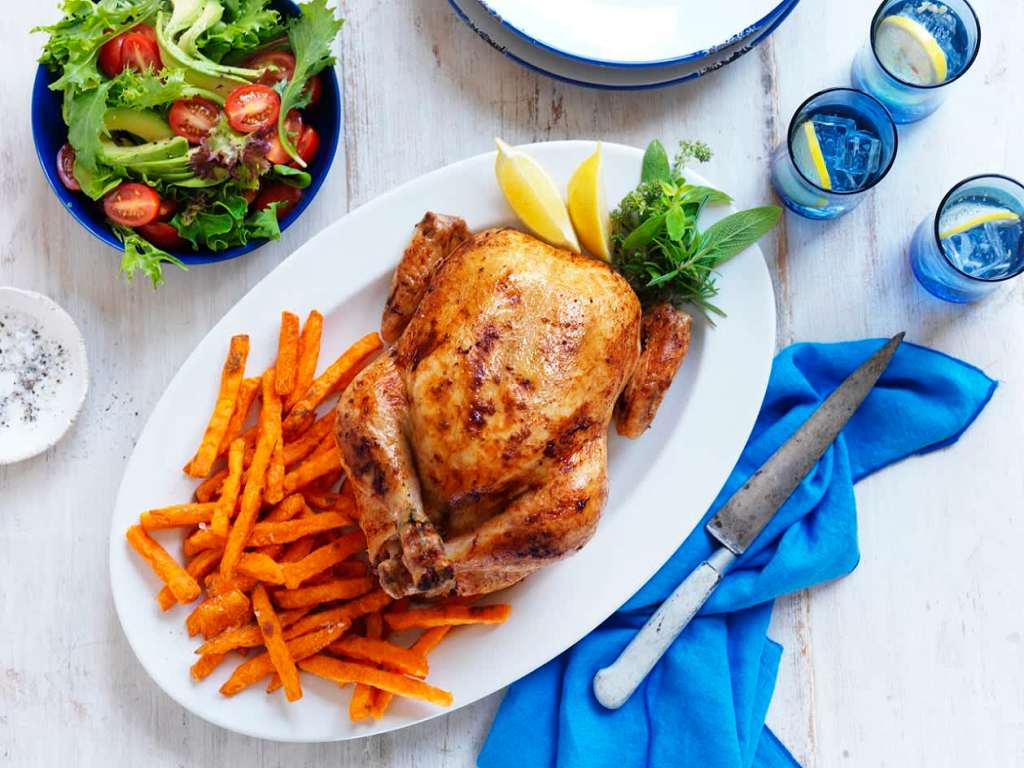New research has confirmed that chicken is still Australia’s favourite meat. It also told us that Australians might have the wrong end of the chicken drumstick when it comes to facts about Aussie chicken meat. Learn the facts here…
Chicken is hands-down the nation’s favourite dish. 46% of all meat consumed in Australia is chicken – if you don’t include seafood. While the humble chook remains a staple of the Aussie diet, so too do perceptions around how it’s raised and produced.
With issues like animal welfare, sustainability and provenance on the agenda, the Australian Chicken Meat Federation (ACMF) wants you to know how one of our favourite foods is produced. They want to dispel a few of those ideas and encourage you to separate fact from fiction.
The ACMF is the peak body of Australia’s chicken industry, representing both farmers and processors. Chicken has a significant place in today’s modern diet and is a key healthy, affordable and sustainable protein source.
Dr Vivien Kite is the Executive Director of the ACMF and she shared with us some of her insights about how the chicken we eat is raised and produced in a responsible way, and about the practices and standards we have in this country.
This is how you know you are eating the best you possibly can when you buy Australian chicken.

Welfare
“Chicken behaviour is something that’s very close to my heart,” Dr Kite said.
“It’s essentially what I did my research on here in Australia and overseas – albeit many years ago! Far from being an esoteric subject, chicken behaviour is a serious and important issue, not just for the chicken, but because it’s a critical tool that chicken farmers use in managing the flocks in their care on a daily basis”.
Chicken farming methods have to adhere to high standards of bird welfare. Ensuring that chickens are well-fed, healthy and comfortable is in the best interests of both the birds and the growers.
For example, meat chickens in large commercial barns are able to express the full range of comfort behaviours seen in their wild ancestors. That means they rest, preen, stretch, flap, interact with other chickens and their environment and even take dust baths.
These behavioural indicators are important as farmers need to understand chicken behaviour to monitor and manage their flocks. Visual cues are important but so is the noise that is coming from the flock.
Sustainability
Most commercial chicken produced today is farmed intensively, requiring relatively small amounts of land and producing meat extremely efficiently, without wasting energy and other inputs. This contributes to its very low environmental impact. In fact, chicken has the lowest environmental footprint of any meat.
One of the biggest determinants of how much energy is used, and greenhouse gases created to produce livestock products like chicken, is how efficiently the animals convert feed into edible products.
Feed has a major impact on environmental costs. The good news is that chickens are the most efficient converters of feed into meat of all land-based livestock species.
The way chickens are raised today in Australia means that growth can be optimised while minimising the amount of feed they need to grow. This all results in an efficient use of feed, energy and water to produce each kg of chicken meat – and less greenhouse gas emissions created.
Are chickens fed hormones in Australia?
No. Australian chickens are not given hormones in any way, and haven’t been for over 60 years. Hormones are not allowed, not available, not necessary and not used.
Chickens have been bred to be meatier, more robust and more productive, which has been possible thanks to improved genetics and the quality of their nutrition and care.
Are chickens reared in cages?
No. In Australia, meat chickens are never reared in cages.
All commercial meat chickens in Australia are raised on the floor of large barns. The floor is always covered with a bedding material like wood shaving or rice hulls. Some chickens also have access to an outdoor range.
Most people don’t realise that the chicken meat and chicken egg industries are entirely separate and the way birds are housed is completely different.
How are antibiotics used in Australia?
Chicken farmers and their veterinarians are responsible for maintaining the health and welfare of the chickens in their care.
Sometimes, where other health management strategies have failed, it may become necessary to administer antibiotics to treat or prevent disease in flocks.
However, all chickens are raised under veterinary supervision and only antibiotics approved by Australia’s regulatory authorities are used if needed. They must also be administered in accordance with strict guidelines so that they do not leave unsafe residues.
All major chicken companies in Australia have adopted antimicrobial stewardship programs to ensure that any use of medication adheres to the key principles of responsible use, preserving the effectiveness of these precious resources for humans and animals alike.
Made in Australia
All fresh and frozen raw chicken meat available in Australia is ‘born, bred and raised’ in Australia. Some of us think that the chicken we place on our table could come from overseas but it doesn’t.
There’s a tonne of choice on Aussie shelves when it comes to buying chicken cuts and chicken products. We’ve got everything from conventional, free range, RSPCA Approved and organic chicken. All these farming systems may have unique benefits, but the strict practices and standards of how chickens are raised apply to all commercially farmed meat chickens.
So, whether you are eating out or cooking at home, you can be assured that the Australian chicken meat you eat has been raised and produced in a responsible way.







